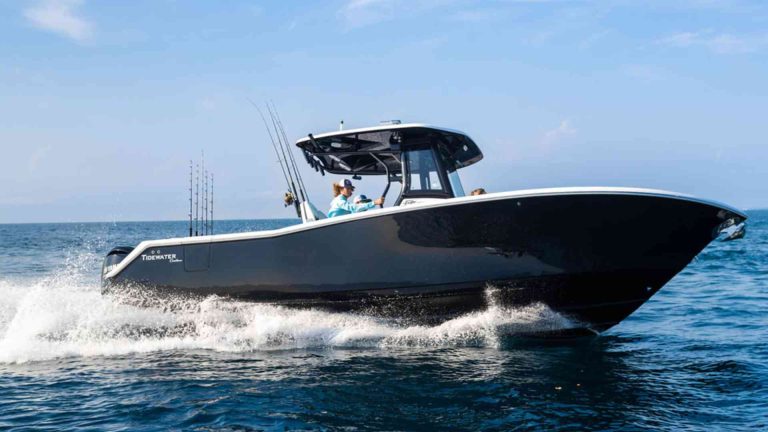How to Tie-Up with Other Boats: Rafting Up
Boating is a cherished pastime that combines adventure, relaxation, and social connection. One of the most enjoyable ways to enhance the social aspect of boating is by rafting up—tying multiple boats together in open water to create a floating community. Whether you’re gathering with friends at a sandbar, relaxing after a day of watersports, or meeting new boating enthusiasts at a popular “party cove,” rafting up offers a unique experience. However, it requires careful planning, proper equipment, and an understanding of safety protocols to ensure everyone enjoys the day without incident. This comprehensive guide will walk you through the process of rafting up boats safely, covering terminology, step-by-step procedures, equipment recommendations, safety tips, and etiquette to make your next raft-up a success.
Understanding Rafting Up: What It Means and Why It Matters
Rafting up, often called a “raft-up” or “tie-up,” refers to the practice of securing two or more boats together side by side in open water. The terms “raft-up” and “tie-up” are used interchangeably, though regional preferences may vary—boaters in some areas lean toward one term over the other. Regardless of what you call it, the goal is the same: to create a stable, shared space where boaters can socialize, relax, or transfer people and gear without needing a dock.
Rafting up serves several purposes:
- Social Gatherings: It’s a fantastic way to connect with friends or meet fellow boaters at popular spots like sandbars or islands.
- Watersports Base: A raft of boats can act as a central hub for swimming, tubing, or other activities.
- Convenience: It allows for easy exchanges between boats when docking isn’t an option.
While rafting up is inherently fun, it comes with risks—weather changes, boat collisions, and human error can turn a good time into a problem. That’s why preparation and execution are key.
Step-by-Step Guide to Rafting Up Safely
No two raft-ups are identical due to variables like location, weather, and the number of boats involved. However, a standardized procedure can minimize risks and ensure a smooth experience. Here’s how to raft up boats safely:
1. Plan Ahead
Before approaching a raft-up, devise a clear entry and exit strategy. Assess your equipment—ensure you have enough fenders, bumpers, and lines (ropes) for the job. Consider the following:
- Entry Plan: How will you position your boat relative to others?
- Exit Plan: How will you depart, especially if other boats join or leave? While you can’t control every variable, identifying potential exit routes keeps you prepared.
- Surroundings: Stay aware of nearby boats, swimmers, and hazards like shallow water or rocks.
2. Choose the Right Spot
Select an anchoring location that’s deep and spacious enough to accommodate all boats. The area should allow the raft to swing 360 degrees without any boat nearing the shore. Avoid crowded or narrow spots where maneuvering is difficult.
3. Anchor the Largest Boat First
The biggest, heaviest boat should drop its anchor first. This vessel becomes the raft’s foundation, stabilizing the group as other boats tie up. Using multiple anchors from different boats can cause issues—boats may ride waves differently, increasing tension and risking collisions. A single, well-set anchor from the primary boat is best.
4. Position Additional Boats
Once the anchor is set, other boats can join. To maintain balance:
- Alternate Sides: Tie boats on both sides of the anchored vessel to distribute weight evenly.
- Size Order: Place smaller boats on the edges and larger ones closer to the center. This keeps the raft stable and reduces strain on lines.
5. Deploy Fenders Early
Fenders (or bumpers) protect boats from scraping or banging into each other. Deploy them before approaching:
- Quantity: Use at least three fenders per boat, even for small vessels.
- Placement: Adjust fender height to align with the neighboring boat’s rubrail. Boats of similar size make this easier, but adjustments can accommodate differences.
6. Approach Slowly
Ease into position beside the neighboring boat at a reduced speed. Fast approaches create wakes that can jostle the raft and cause damage. Once aligned, crew members can toss lines across to begin tying up.
7. Secure the Boats
Tie the boats together using a specific pattern:
- “X” Shape: Connect the bow (front) of one boat to the stern (rear) of the next, and vice versa, forming an “X” with the lines. This minimizes fore-and-aft movement.
- Avoid Breast Lines: Lines running straight from bow to bow or stern to stern can pull boats together too tightly, increasing collision risk during waves.
- Cleats Only: Secure lines to cleats, not railings or accessories, which may not withstand the tension.
8. Tighten Lines
Keep all lines as tight as possible to reduce motion between boats. Loose lines allow excessive rocking, negating the fenders’ protective role. Ideally, the raft should move as a single unit with the waves.
9. Exit in Reverse Order
When leaving, depart in the reverse order of arrival (last in, first out). Before pulling away:
- Check Gear: Retrieve fenders, lines, water toys, and ladders.
- Confirm Passengers: Ensure all crew and guests are aboard.
- Go Slow: Navigate carefully, watching for swimmers and other boats.
Essential Equipment for Rafting Up
The right gear makes rafting up safer and easier. Here are some top recommendations for fenders and lines, along with their benefits:
Fenders and Bumpers
- TITAN Inflatable Tie-Up Boat Bumper
- Size: Available in 18″ x 10′ or 24″ x 10′.
- Benefits: Heavy-duty and inflatable, this bumper provides a robust barrier between boats, reducing damage risk from unpredictable movement.
- SENTRY 2.0 Boat Fenders
- Features: Smart attachment system, contour-hugging design.
- Benefits: No knots needed, adjustable height, and stable positioning above and below the rubrail for maximum protection.
- ICON Boat & Dock Fenders
- Versatility: Works for both boats and docks.
- Benefits: A multi-purpose option that adapts to various rafting scenarios.
Lines
- Specifications: Use soft, flexible mooring ropes (minimum 20mm diameter) with spliced loops for easy cleat attachment. Avoid thin, stiff ropes like nylon craypot lines.
- Lengths:
- Bow line: At least 8 meters.
- Stern and spring lines: Minimum 5 meters each.
- Tip: Black lines stay cleaner over time compared to white ones.
| Equipment | Purpose | Recommended Specs |
|---|---|---|
| Fenders | Prevent boat collisions | 3+ per boat, 30-50cm diameter |
| Bow Line | Secure front of boat | 8m+, 20mm diameter |
| Stern/Spring Lines | Stabilize boat positioning | 5m+, 20mm diameter |
| Anchor (Largest Boat) | Hold raft in place | Heavy-duty, single use |
Safety Tips for a Secure Raft-Up
Safety is paramount when boats are in close proximity. Here are critical tips to keep everyone and everything safe:
- Stay Aware: Monitor your surroundings—other boats, swimmers, and underwater hazards can shift quickly.
- Educate Passengers: Instruct everyone to keep hands and feet inside the boat during tying and while rafted to avoid pinches or injuries.
- Check Weather: Watch forecasts and plan an early exit if conditions worsen.
- Slow Approach: Minimize wakes by approaching at low speed.
- Avoid Swimming Zones: Steer clear of areas between rafts and beaches where swimmers are likely. Pass rafts on the bow side, not the stern, where people may be in the water.
- Align Boats: Position boats so bows face the same direction, aligning swim platforms for safe crossing.
- Tight Lines: Regularly check and tighten lines to limit motion.
- Careful Crossing: When moving between boats, step cautiously to avoid slips or falls due to waves.
Rafting Up Etiquette: Being a Good Neighbor
Rafting up is a social activity, and good manners enhance the experience for everyone. Follow these etiquette guidelines:
- Be Polite: Greet others warmly and foster a friendly atmosphere.
- Ask Permission: Always request to join a raft, especially with strangers.
- Be Prepared: Arrive with fenders and lines ready, and have a sober skipper on board.
- Mind Noise: Keep conversations and music at a considerate volume.
- Clean Up: Keep gear contained and remove trash to leave the water pristine.
- Enjoy Yourself: Embrace the fun and make new memories.
Common Mistakes to Avoid
Even experienced boaters can slip up. Here are pitfalls to watch for:
- Loose Lines: Failing to tighten lines causes excessive movement and potential damage.
- Size Mismatch: Rafting dissimilar boats (e.g., a pontoon next to a wakeboard boat) complicates fender alignment.
- Rushing: Hurried approaches or exits increase the risk of collisions or forgotten gear.
Advanced Rafting Scenarios
Rafting on Mooring Buoys
- Inspection: Check the buoy’s condition and use two lines (primary and backup) to handle the extra weight.
- Positioning: Aim for the buoy to sit between boat bows to avoid hull damage.
Rafting Against Tidal Walls
- Long Lines: Use extended bow, stern, and spring lines to manage tidal changes.
- Fenderboards: Essential for distributing weight and protecting against wall protrusions.
Large Rafts (3+ Boats)
- Limit Size: Three to five boats are manageable; beyond that, stability decreases in windy conditions.
- Anchor Strategy: Smaller boats can add stern lines to shore or separate anchors if spaced well to avoid tangling.
Conclusion: Rafting Up Done Right
Rafting up boats safely combines technical skill, proper equipment, and a dash of courtesy. By planning ahead, using the right gear, following a clear procedure, and prioritizing safety, you can create a floating oasis for socializing and relaxation. Whether it’s a quiet day with friends or a lively gathering at a bustling cove, a well-executed raft-up enhances the boating experience. So, gather your fenders, tighten those lines, and enjoy the water—safely and responsibly.
Happy Boating!
Share Rafting Up 101: How to Safely Raft Up with Other Boats with your friends and leave a comment below with your thoughts.
Read 5 Boating & Fishing Charities to Support this Veteran’s Day until we meet in the next article.






